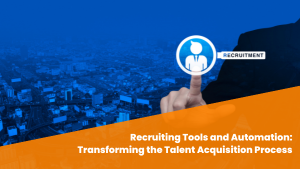
Recruitment is a critical component of building a thriving organization. Finding the right talent not only affects your company’s performance but also influences its culture and future growth.
Not surprisingly, Emotional Intelligence (EI) plays a pivotal role in the recruitment process. The criteria set for recruitment and hiring isn’t all about technical sills and specialized knowledge; while these are important, finding people with the necessary soft skills is key in building successful teams.
In this article, we’ll discuss various aspects of emotional intelligence, its significance, benefits, challenges, and best practices.
Understanding Emotional Intelligence

Emotional intelligence consists of several essential components. Self-awareness, self-regulation, social awareness, and relationship management are the foundational pillars. Understanding these components helps in recognizing and appreciating how emotional intelligence can benefit the recruitment process.
When we talk about emotional intelligence in recruitment, we need to consider how it applies at different stages of the process. From crafting emotionally appealing job descriptions to assessing candidates’ emotional intelligence, each phase plays a significant role in ensuring successful recruitment.
Role of EI in Job Posting
Crafting job descriptions that resonate emotionally with potential candidates can significantly impact your ability to attract the right talent. Understanding the emotional aspects of the job and its culture can help you create a job posting that speaks to the hearts of the candidates.
Types of Emotional Intelligence in Recruitment
In candidate sourcing, recognizing different types of emotional intelligence is essential. Candidates with high emotional intelligence can bring invaluable skills such as empathy, adaptability, and effective communication.
- Self-awareness: Understanding one’s emotions and their impact.
- Self-regulation: The ability to manage emotions and reactions.
- Empathy: Understanding and relating to others’ emotions.
- Social skills: Building and maintaining positive relationships.
- Communication: Effective expression and active listening.
- Stress management: Coping with workplace pressure and uncertainty.
- Adaptability: Embracing change with a positive attitude.
- Leadership Skills: Inspiring and motivating teams, fostering collaboration.
EI During Screening and Selection
Assessing emotional intelligence during the screening process is crucial. Analyzing resumés and using EI assessments and tests can help identify candidates who are more likely to thrive in your organization’s emotional culture.
EI in Interviews
During interviews, probing for emotional intelligence through appropriate questions and scenarios can reveal how well candidates will fit into your workplace culture. Training interviewers in emotional intelligence assessment can be a game-changer.
EI in Job Offers
Negotiation and acceptance phases also benefit from emotional intelligence. Understanding the emotional aspects of compensation packages and the emotional journey of candidates as they accept offers can lead to higher acceptance rates and better engagement from the start.
Benefits Emotional Intelligence in Recruitment

Emphasizing emotional intelligence in recruitment offers a multitude of benefits that have long-term benefits. Below are the main reasons why an organization should make EI a regular part of their recruitment process.
Improved Employee Engagement
Employees with high emotional intelligence tend to be more engaged in their work. They understand and manage their emotions effectively, leading to greater job satisfaction. They are also more likely to connect with their colleagues and the company’s mission, resulting in increased productivity and an overall positive work atmosphere.
Enhanced Teamwork
Emotional intelligence fosters better interpersonal relationships, a vital component of effective teamwork. Emotionally intelligent team members can communicate, empathize, and collaborate more successfully. This leads to smoother project execution and innovative problem-solving, ultimately benefiting the organization as a whole.
Reduced Turnover
Employees with high emotional intelligence often have better coping mechanisms and stress management skills. They can handle workplace challenges with resilience and adaptability. This results in a decrease in turnover as employees are more likely to weather the ups and downs of their roles, reducing the cost and effort associated with recruitment and training.
Improved Customer Relations
Emotional intelligence is not confined to internal dynamics alone; it significantly impacts external interactions as well. Employees with high emotional intelligence are better equipped to understand and connect with customers. They can navigate difficult conversations, provide excellent customer service, and build long-term relationships, ultimately leading to improved customer satisfaction and loyalty.
Conflict Resolution
Emotional intelligence equips employees with the ability to resolve conflicts effectively and constructively. They can navigate disagreements with diplomacy and find solutions that benefit all parties involved. This skill is invaluable in maintaining a harmonious work environment and ensuring that disputes don’t escalate into larger issues.
Leadership Development
Identifying candidates with high emotional intelligence during the recruitment process can also be a stepping stone for future leadership development. These individuals often possess the qualities needed for effective leadership, such as empathy, self-awareness, and the ability to inspire and motivate others.
Cultural Fit
Hiring individuals with strong emotional intelligence can contribute to a positive organizational culture. They are more likely to align with the company’s values and contribute positively to the workplace culture, leading to higher morale and a sense of belonging among employees.
Best Practices for Incorporating Emotional Intelligence in Recruitment

Incorporating emotional intelligence (EI) into your recruitment process is a wise move that can lead to a more harmonious and effective workplace. Here are some best practices to consider when integrating emotional intelligence into your recruitment strategy:
- Define emotional intelligence for your organization – Start by clearly defining what emotional intelligence means for your company. Outline the specific EI competencies that are most relevant to your culture and job roles.
- Train your recruiters – Ensure that your recruitment team understands the importance of emotional intelligence and how to assess it in candidates. Provide training on recognizing EI competencies during interviews and evaluations.
- Create EI-based job profiles – Develop job profiles that include emotional intelligence competencies alongside technical skills and qualifications. This helps in attracting candidates who align with your company’s values and culture.
- Behavioral interview questions – Craft interview questions that prompt candidates to demonstrate their emotional intelligence. For example, ask about their experience in resolving conflicts, handling stress, or building positive relationships in the workplace.
- Use Scenario-based assessments – Implement scenario-based assessments or simulations to evaluate how candidates respond to real-life situations that require emotional intelligence. This can provide valuable insights into their EI competencies.
- Assess soft skills – Pay close attention to soft skills such as active listening, empathy, self-awareness, and interpersonal communication during the recruitment process. These are key components of emotional intelligence.
- Use behavioral assessment tools – Consider using behavioral assessment tools to measure emotional intelligence. Tools like the Emotional Intelligence Appraisal or the EQ-I 2.0 can provide quantitative data on a candidate’s EI.
- Conduct reference checks – When checking references, inquire about the candidate’s emotional intelligence, teamwork skills, and ability to manage interpersonal relationships.
- Assess cultural fit – Evaluate how well candidates fit within your organization’s culture. Ensure that their emotional intelligence aligns with your company’s values and desired work environment.
- Panel interviews – Conduct panel interviews where multiple team members can assess a candidate’s emotional intelligence from different perspectives. This helps in reducing bias and gaining a comprehensive view.
- Feedback and debriefing – Provide constructive feedback to candidates, especially when they aren’t selected. This can be a valuable learning experience for candidates and demonstrates your commitment to their professional growth.
- Continuous training and development – Invest in the emotional intelligence development of your existing employees. This can help create a workplace culture that values and nurtures EI.
- Measure impact – After incorporating emotional intelligence into your recruitment process, track and measure the impact on employee engagement, teamwork, and other relevant metrics. Adjust your strategies based on the results.
- Stay current – Stay up-to-date with the latest research and best practices in emotional intelligence. The field is evolving, and ongoing learning ensures that your approach remains effective.
- Promote emotional intelligence in leadership – Encourage your company’s leadership to embody and promote emotional intelligence. When leadership values EI, it sets a strong example for the entire organization.
Future Trends and Outlook
The role of emotional intelligence in recruitment is evolving with advancements in AI and technology. It is crucial to stay up to date with the latest trends and research in this area to maintain a competitive edge.
Emotional intelligence in recruitment isn’t merely a buzzword today but a tangible transformative tool for building high-performing teams and nurturing a positive workplace culture. As organizations evolve, those that recognize and harness the power of emotional intelligence in their recruitment processes will have a distinct advantage in attracting and retaining top talent.
Embracing emotional intelligence in recruitment is a journey, and the road to success starts by understanding its significance, implementing best practices, and keeping an eye on future trends. In the fast-paced world of talent acquisition, emotional intelligence can be the key to unlocking your organization’s full potential.
Want to learn more? Contact us today for a free consultation.
You can also get free candidate profiles by filling out our form.










